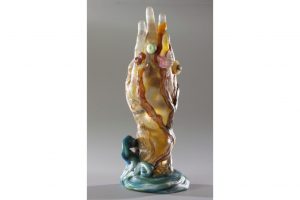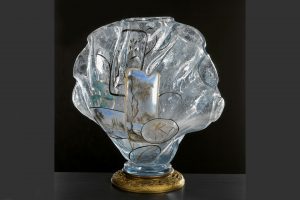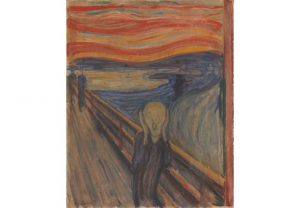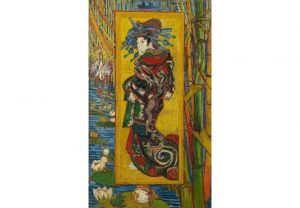In the living room of Carl Larsson’s home, we see a large south-facing window covered with ivies. The window has no curtains, and a variety of plant pots are placed on the well-lit windowsill overlooking Sundborn’s river. Suzanne, Larsson’s oldest daughter, is on a stage raised above the room floor, watering the plants. Known for her tender personality, she continued to model for her father even when she was older.
Larsson gained a name for himself as a painter thanks to a book, A Home (1899), containing prints of his watercolors, including this Flowers on the Windowsill. The architecture, interior décor, and lifestyle of his house in Sundborn, a village in Dalarna County, Sweden, became the new standards of Swedish style, gaining people’s understanding and popularity.
His wife Karin, also a painter, and Larsson spent many years renovating the villa they inherited from her parents. The book documents the renovation process, the couple, and their children as they grew up.
Sweden’s Nationalmuseum: Nordic Life Depicted by Carl Larsson
Browsing Public Domain Artwork of World Museums
No.007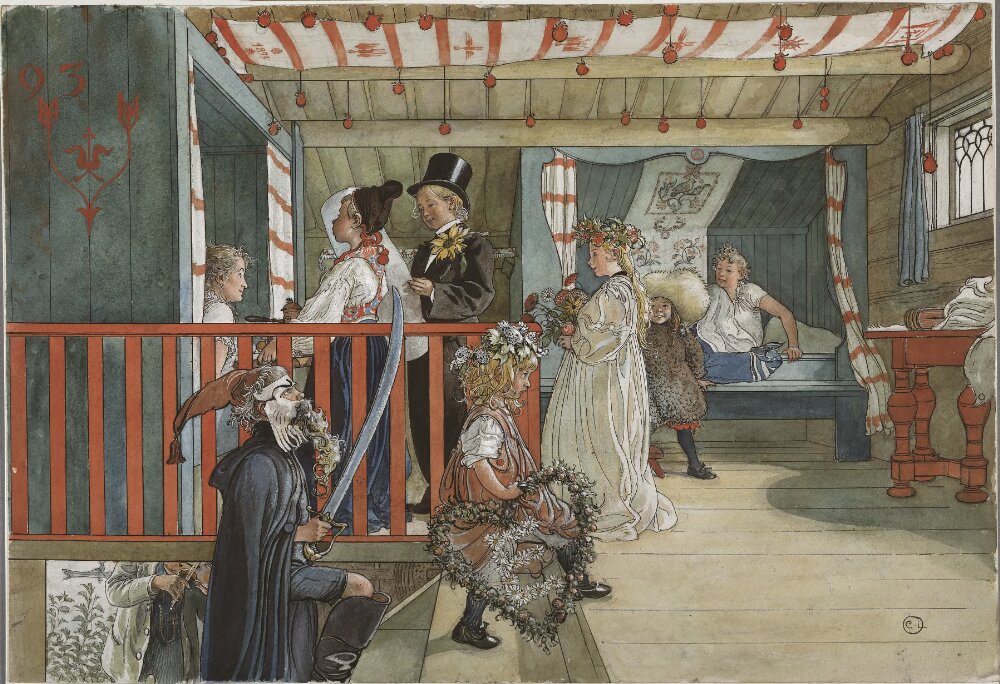
The term “public domain” refers to public intellectual property that is not copyrighted. There are art museums around the world that offer open online access to works in their collections. Here, we highlight works that have entered the public domain and redefine the appeal of such collections.
This series of articles presents art museums around the world that offer free online access to public domain works (intellectual property not protected by copyright) in their collections. In this ninth installment, we feature works by Carl Larsson, Sweden’s representative painter from the 19th century, from the collection of the Nationalmuseum in Stockholm. The museum, adorned with Larsson’s wall paintings, has an extensive collection of oil and watercolor works by the painter. In this article, Art Historian, Director of the Museum of Modern Art, Ibaraki Toru Arayashiki discusses three critical works in the collection.
Carl Larsson, Flowers on the Windowsill, 1894
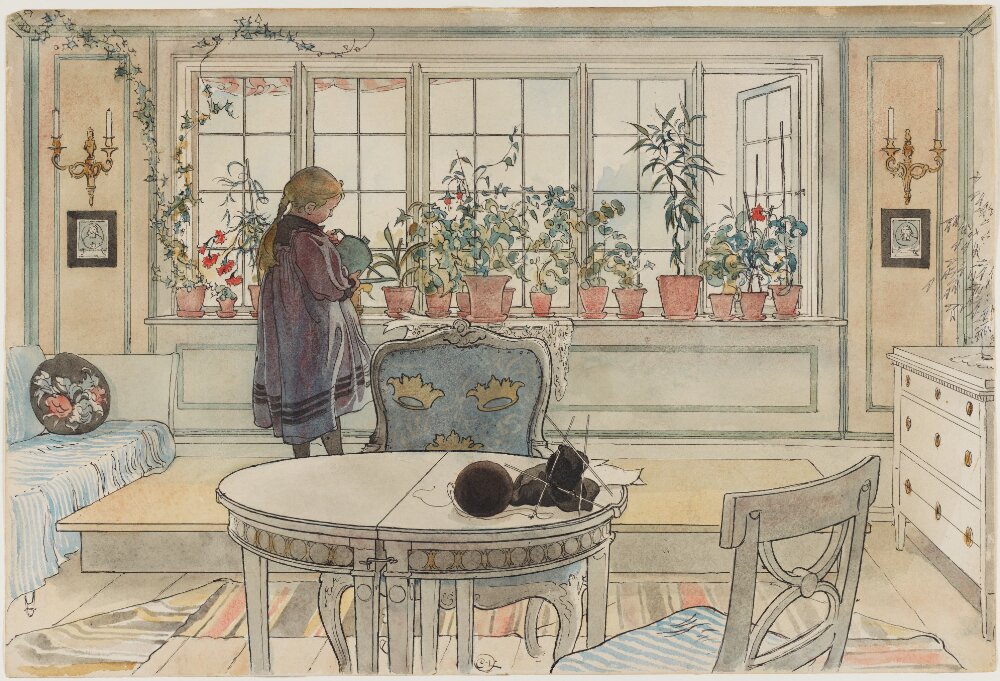
Carl Larsson, A Day of Celebration, 1898

The Swedish people have a Christian custom of celebrating a name day along with a birthday. In the painting, the Larsson children are celebrating their maid Emma in early morning. Suzanne, the oldest daughter, is dressed as a man and reciting her original poem written on a large piece of paper. Next to her is Ulf, the oldest son, dressed in a traditional female costume of Rättvik in Dalarna County and carrying breakfast. Lisbeth, the second daughter, and Kersti, the fourth daughter, are wearing crowns of flowers picked from the morning meadow. Kersti, walking up the stairs, is holding a wreath with Emma’s initial on it, as the maid is the star of the day.
The room is adorned with vividly contrasting blue and red and Karin’s handmade canopy, decorated with red stripes and Celtic bird patterns and hanging from the ceiling.
We must also pay attention to the way a string player by the door in the lower left corner is depicted. The technique of hiding the person’s face is influenced by Japanese art, ukiyo-e. Indeed, Larsson is also known as one of the best Japonisme painters in Scandinavia.
Carl Larsson, Breakfast under the Big Birch, 1896
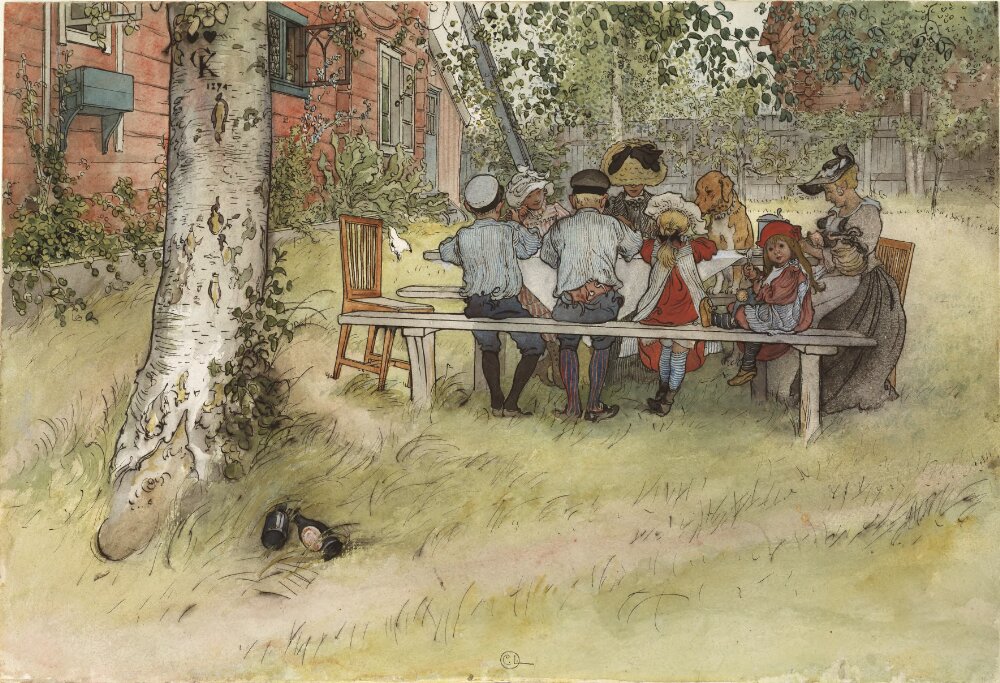
Scandinavia has long winters, and people spend their summer days in the bright outdoors. The Larsson family has breakfast in their home garden with white birches. Larsson had eight children, four girls and four boys (one of whom died shortly after birth). Considering the year of production, depicted in the painting are his wife Karin in the middle facing front, the oldest daughter Suzanne to her left, four children facing their backs (from the left: the second son Pontus, the oldest son Ulf, the second daughter Lisbeth, and the third daughter Brita), a woman who modeled for Larsson’s paintings to the right, and their dog Kapo to the right of Karin.
The initials K, for Karin, and C, for Carl, with a heart arrow can be seen on the birch trunk. The children appear in many of Larsson’s paintings as models.
Most of the original watercolors in the book, A Home, are interior paintings, but this piece depicts one of the unique features of Larsson’s house in Sundborn. The reddish-brown walls, the traditional color of Swedish houses, have decorative windows and flower beds in green, a color that breaks away from tradition.
Text: Toru Arayashiki (Art Historian, Director of the Museum of Modern Art, Ibaraki)
Nationalmuseum
The museum’s collection is based on the works collected by King Gustav I in the 16th century. The museum was established in 1794 as a royal museum. In 1866, it opened as the national museum in the current building inspired by Italian Renaissance architecture. It is known for its 17th- and 18th-century Dutch and French paintings and an extensive collection of Swedish paintings and craftworks from the 17th century to the present. Following the renovation between 2015 and 2018, it reopened to the public free of charge in an effort to welcome a wider audience.
https://www.nationalmuseum.se/
https://collection.nationalmuseum.se/eMP/eMuseumPlus
Address: Södra Blasieholmshamnen 2, 111 48 Stockholm, Sweden
Admission: Free


